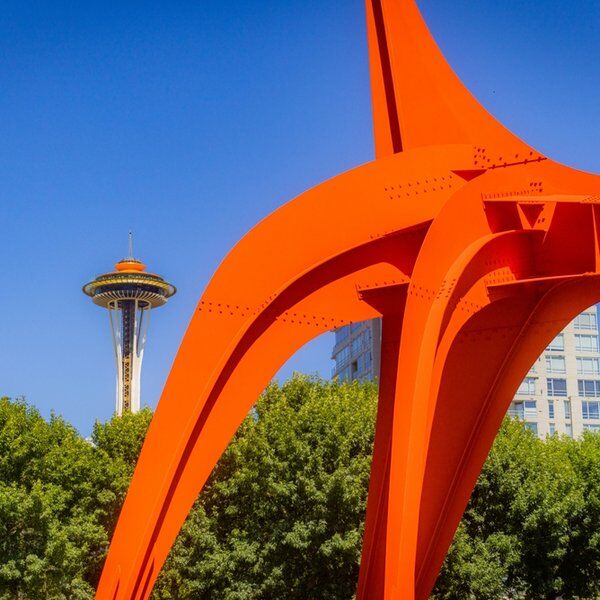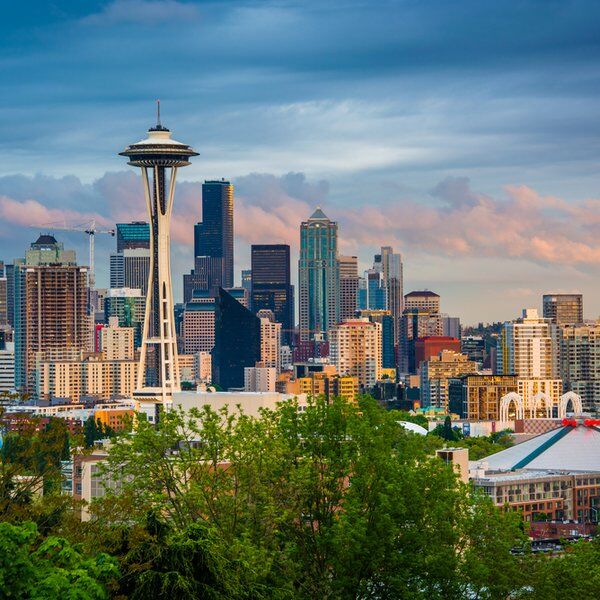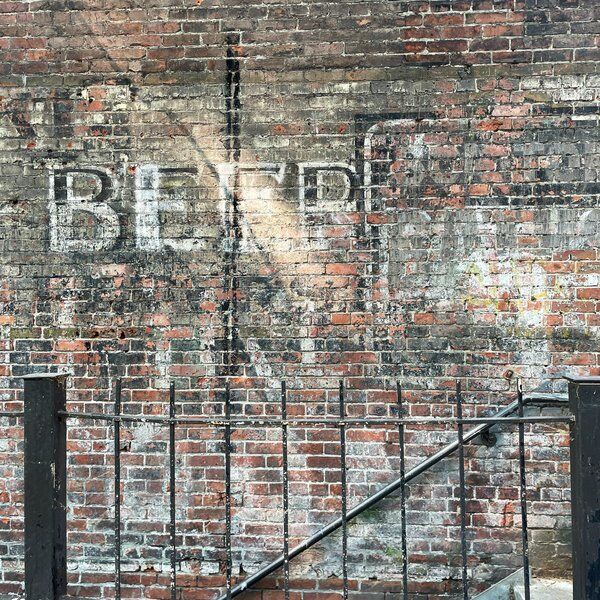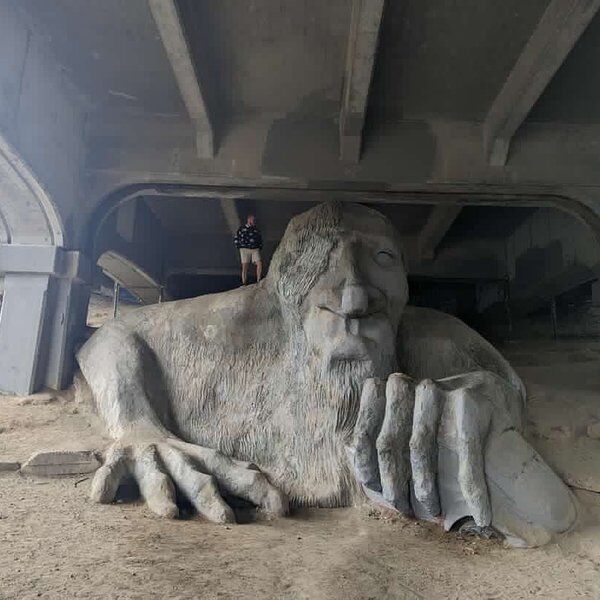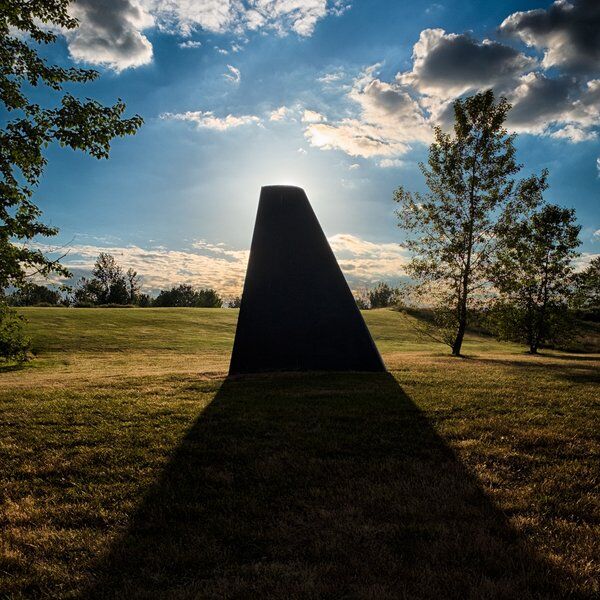Gas Works Park: A Relic of Seattle's Industrial Past
Flanking the Northern shores of Seattle’s Lake Union, Gas Works Park is a carefully preserved fusion of industrial history and urban green space. Owing its name to the site upon which it was built – a 19-acre former coal gasification plant – Gas Works Park has been serving Seattleites with flowing greenery and scenic picnic opportunities since 1975.
“Gas Works Park will not only be a unique first in the United States, if not the world, but will set an important precedent for the future preservation of industrial structure through an imaginative plan for adaptive use.”
As a public place, the park is a testament to the city’s commitment to celebrating its industrial heritage, in a modern and environmentally conscious manner. Many of its striking features such as the Great Earth Mound and play areas were transformed from on-site rubble and former industrial buildings. By breathing new life into the tired concrete forest of rusted towers, stacks, pipelines, and sheds, Gas Works Park rightfully earned its place on the National Register of Historic Places, in 2013.
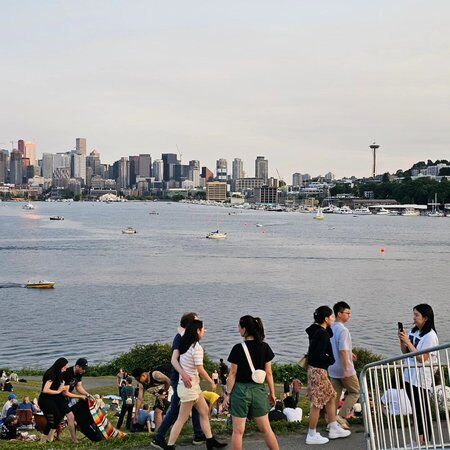
Securing Gas Works Park as a Public Space
As early as 1903, Gas Works Park was identified by the Olmsted Brothers as being the perfect location for a public park.
“If not too costly, the point of land between the northeast and northwest arms of Lake Union and the railroad should be secured as a… playground and waterfront park. The population. . . would be greatly benefitted by this little park or playground.”
Despite these sentiments however, it was purchased by the Seattle Gas Light Company in 1906, and served as a crucial industrial facility during Seattle's early development. For the next 50 years, the gasification plant supplied the city with gas to power streetlights and homes. By 1956, as cleaner and more efficient sources of energy emerged, the plant became obsolete and was decommissioned.
Even though the production of gas had ceased, traces of the plant remained when the City of Seattle finally acquired it in 1962. For $1.34 million Seattle purchased a landscape scattered with storage tanks, boiler and pump houses, offices, workshops, and train trestles. Rather than demolishing the old gas plant and erasing its industrial history though, Seattle opted for a visionary transformation. It was then up to local architect Rich Haag to realise this vision by transforming “the complex array of towers, tanks and pipes” which even preservations considered: “ugly intrusions on the landscape” into a serene public park.
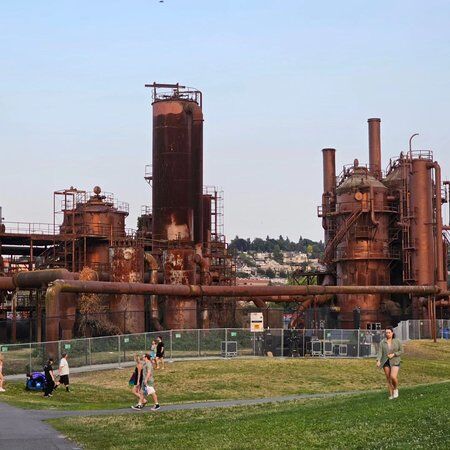
The Ingenious Transformation of Gas Works Park
Haag began drawing up plans for Gas Works Park in 1971. With the help of his team, he either ingeniously converted the site’s industrial relics into everyday park amenities, or left them standing, artistically, as ruins. One such feature is the boiler house, which became a picnic shelter complete with tables and fire grills. While a former exhauster-compressor building became an open-air play barn, filled with brightly painted machinery for children. The result is an undeniably quirky park.
"Gas Works Park is easily the strangest park in Seattle and may rank among the strangest in the world."
For his efforts, Haag was awarded the American Society of Landscape Architects President's Award. But adjustments were not just made on the ground, the design was considered revolutionary for its reclamation of polluted soils in the ground. Using bioremediation, oil-degrading enzymes were released in the area to stimulate the breakdown of toxic contaminants in the soil. Today, the plant’s ruins, featured in the contemporary safe and beautiful park setting, exist as a seamless blend of old and new.
For more examples of Seattle rejuvenating, preserving, and incorporating its heritage into its current landscape, check out our article on the Seattle Underground.
Visiting Gas Works Park
Gas Works Park is more than an ode to Seattle’s industrial past – it is a place of rest and enjoyment. Families gather for picnics on sunny afternoons, kite-flying contests are held atop the artificial Great Mound, and cyclists or hikers navigate the Burke-Gilman Trail, which stretches through the park. All unfolding against the breathtaking backdrop of the Seattle skyline.
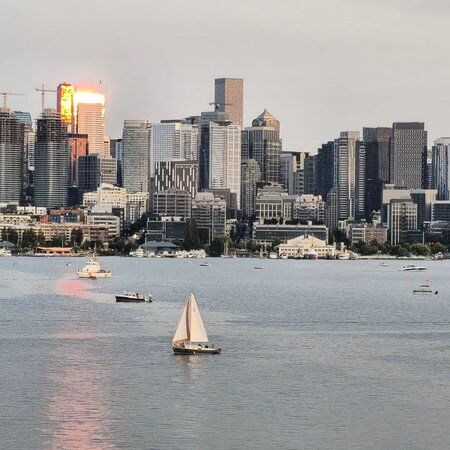
Upon entering through either the landscaped parking area or the popular hiking trail, the park’s details unfold into seven main features. Earth Mound, Prow, North Lawn and South Lawn, are each intended as spacious recreational areas. And the Towers, Picnic Lawn and Shelter, and Play Barn, are all former industrial buildings.
One particularly striking feature of the park is the sundial placed atop the Great Earth Mound. Formed using concrete, shells, bronze, glass, and other materials it was designed by two Seattle artists, Chuck Greening and Kim Lazare. The sundial achieves its effect by using the visitor’s shadow as a gnomon to tell the time of the day and season.
A Hub for Community Engagement
Gas Works Park is not just a popular tourist destination; it is deeply cherished by the local community. Throughout the year the park plays host to an array of events including firework displays on Independence Day, concerts, and political rallies. The park's unusual and eccentric charm provides an ideal backdrop for creative expression, and it has been the setting for numerous weddings, photo shoots, and art installations. Additionally, despite its remote location it has featured in several films including Singles and 10 Things I Hate About You.
Gas Works Park as a Symbol of Seattle's Identity
“The park represents a complete reversal from a period when industrial monuments were regarded, even by preservationists, as ugly intrusions on the landscape, to a time when such structures as the gas works are recognized for their potential ability to enhance the urban experience.”

Gas Works Park has become a true symbol of Seattle’s urban identity. Haag’s reimagining of the former heavily industrial setting has considerably changed the way locals view their own heritage. In an urbanised setting the ‘ugly’ features can be viewed through a new and appreciative lens. Although not all the structures were preserved the unique charisma and charm of the old plant shines through. In this manner the park serves almost as a museum, showcasing remnants of the Industrial Revolution that changed the world as we know it.
“History sits on this little wasteland, not only the parochial history of a given city, but also a fragment of the chronicle of world and culture. It is certainly as valuable a document as anything preserved in the Museum of History and Industry.”
Our Thoughts…
“A remarkably original and attractive example of how to reclaim a seemingly hopeless and obsolete industrial installation. Instead of being destroyed or disguised, it has been transformed into a lighthearted environment ... A project of historical significance for the community. A symbol of American technology preserved.”
Gas Works Park exemplifies the spirit of Seattle – a city that honours its history, embraces its industrial heritage, and nurtures its community through innovative urban planning. Both tourists and locals cannot help but be intrigued by, and drawn to, this captivating blend of industrial archaeology, urban greenery, and wonderful views. It is an endearing tribute to Seattle's past, present, and promising future.
Interested in finding more places like this? Try one of our CityDays Urban Exploration Games - untangle cryptic clues as a team, as you are taken on a journey to the most unique, unusual and bizarre corners of cities around the world.




